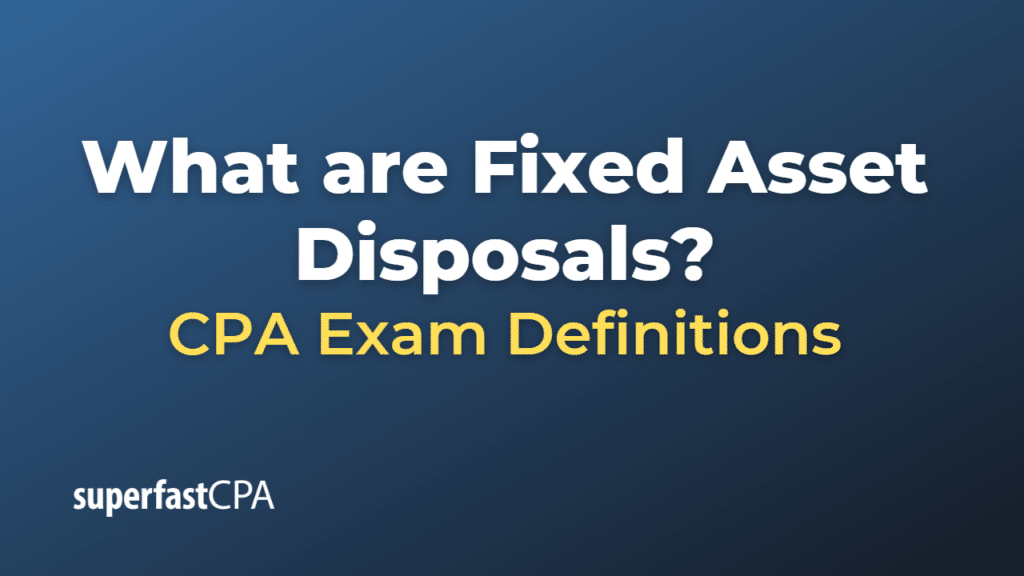Fixed Asset Disposals
Fixed asset disposals refer to the act of getting rid of a fixed asset from a company’s balance sheet. This typically occurs when an asset is fully depreciated, no longer usable, or no longer needed. Disposals can take place in several ways:
- Sales: The company can sell the asset to another entity. This is common for assets that still have some use left in them but are no longer needed by the company, like machinery, vehicles, or buildings.
- Trades: The company can trade the asset in as part of the purchase of a new asset. For example, a company might trade in an old company vehicle when purchasing a new one.
- Retirements: If an asset is fully depreciated and no longer usable, the company might simply retire it. This typically involves physically disposing of the asset, like junking an old machine or demolishing a building, and removing it from the company’s fixed asset register.
- Loss or Destruction: If an asset is lost, stolen, or destroyed (for example, in a fire or natural disaster), it would also need to be disposed of from the company’s balance sheet.
In all of these cases, the company needs to account for the disposal properly. This involves removing the asset’s cost and the associated accumulated depreciation from the balance sheet, and recognizing any gain or loss on the disposal. The gain or loss is determined by comparing the proceeds (if any) from the disposal with the asset’s book value (its original cost minus accumulated depreciation) at the time of disposal.
Example of Fixed Asset Disposals
Let’s take a hypothetical example involving a delivery company named “QuickDeliver.” QuickDeliver has a fleet of delivery vans that it uses for its operations. After several years of use, one of the delivery vans has become old and requires frequent expensive repairs.
QuickDeliver decides it’s time to dispose of the old van and replace it with a new one. Here’s how it handles the fixed asset disposal:
- Sales: QuickDeliver manages to sell the old van to a local small business for $5,000.
- Accounting for the Disposal: The original purchase price of the van was $25,000, and QuickDeliver has been depreciating the van using a straight-line method over an estimated useful life of 10 years. As the van was 8 years old, the accumulated depreciation on the van is $20,000 (8 years * $2,500 per year). This gives the van a book value of $5,000 ($25,000 original cost – $20,000 accumulated depreciation).
When QuickDeliver sells the van, it first removes the van’s original cost and the associated accumulated depreciation from its balance sheet. This is done by debiting the accumulated depreciation account for $20,000 and crediting the delivery vans (fixed asset) account for $25,000.
Next, QuickDeliver records the cash received from the sale by debiting the cash account for $5,000.
Since the sale proceeds ($5,000) equal the van’s book value ($5,000), there’s no gain or loss on the sale. Therefore, no additional journal entry is needed to record a gain or loss.
- Update the Fixed Asset Register: QuickDeliver then updates its fixed asset register to reflect that the old van has been sold.
By following this process, QuickDeliver ensures that its financial statements accurately reflect the disposal of the old van and the proceeds from the sale. It also maintains an accurate fixed asset register for managing its remaining fleet of vans.













